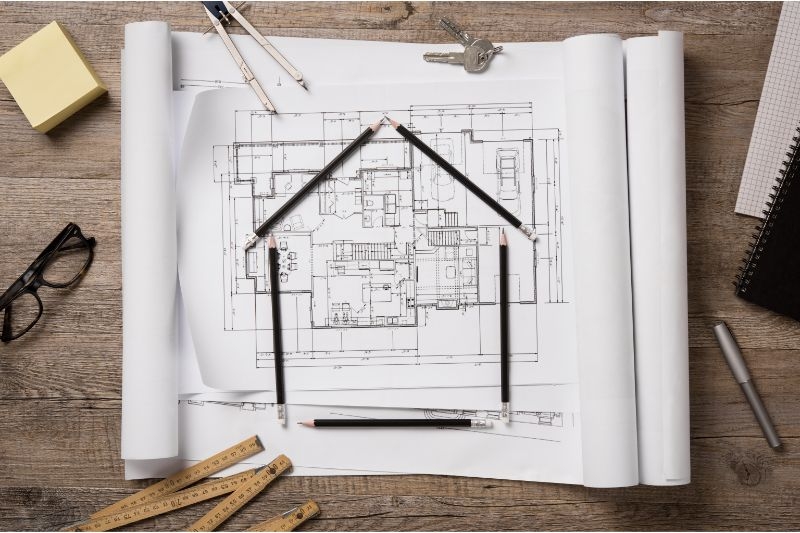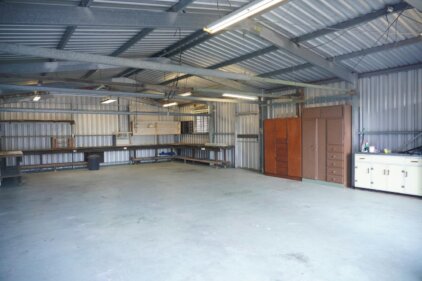Importance of a well-designed home office
A well-designed home office goes beyond aesthetics; it has a profound impact on our productivity, focus, and overall well-being. When we work from home, it is crucial to have a designated space that allows us to separate our professional and personal lives. A well-designed home office can help create this separation, mentally and physically, enabling us to be more productive during work hours and fully disconnect during our downtime. Additionally, a thoughtfully designed workspace can enhance our concentration, motivation, and creativity, ultimately leading to better outcomes in our professional endeavors.
Factors to consider when designing a home office
When designing a home office, several factors need to be taken into consideration to ensure optimal functionality and comfort. Firstly, the location of your home office within your house is crucial. Ideally, it should be situated in a quiet area away from distractions, such as the living room or kitchen. This will help create a dedicated space solely for work, minimizing interruptions and boosting your focus. Additionally, consider the layout and size of the room. A spacious and well-organized office will allow for easy movement and storage, reducing clutter and promoting a clear mind.
Another important factor to consider is the availability of natural light. Natural light has been proven to positively impact productivity, mood, and overall well-being. Position your desk near a window to maximize the amount of natural light you receive throughout the day. If natural light is limited, invest in high-quality artificial lighting that mimics daylight, creating a bright and energizing atmosphere.
Ergonomic furniture and equipment for a productive workspace
Creating a productive workspace starts with investing in ergonomic furniture and equipment. Your desk and chair should be adjustable to accommodate your height and provide proper support for your posture. A comfortable chair with lumbar support will prevent back pain and discomfort during long hours of work. Additionally, consider investing in a standing desk or a desk converter that allows you to alternate between sitting and standing positions. This can improve circulation, reduce the risk of musculoskeletal issues, and increase energy levels.
In addition to ergonomic furniture, it is essential to equip your home office with the right tools and equipment. Invest in a reliable computer or laptop, a high-speed internet connection, and a noise-canceling headset for clear communication during virtual meetings. Consider the nature of your work and determine if additional equipment, such as a printer, scanner, or second monitor, would be beneficial. Having the necessary tools readily available will streamline your workflow and enhance your productivity.
Lighting and color schemes for optimal productivity
Lighting and color schemes play a significant role in creating an environment that promotes productivity and focus. As mentioned earlier, natural light is ideal, but if that is not possible, opt for bright, cool-toned artificial lighting that mimics daylight. Avoid harsh, overhead lighting that can cause eye strain and fatigue. Instead, use task lighting or desk lamps to provide focused illumination where it is needed.
When it comes to color schemes, opt for neutral tones like whites, grays, and beiges as the base color for your home office. These colors create a clean and calming atmosphere, allowing your mind to focus on the task at hand. Consider adding pops of color through accessories or artwork to add personality and inspiration to your workspace. For example, a vibrant painting or a motivational quote can serve as a visual reminder of your goals and aspirations.
Organization and storage solutions for a clutter-free space
A cluttered workspace can hinder productivity and increase stress levels. To maintain an organized and clutter-free home office, invest in storage solutions that suit your needs. Start by decluttering and organizing your workspace, eliminating any unnecessary items. Utilize shelves, filing cabinets, and desk organizers to store documents, stationery, and other essentials. Keep your desk surface clear of clutter, only having the necessary items within reach. Implementing a system for organizing your files and paperwork will save you time and frustration in the long run.
Incorporating technology and connectivity into your home office
In today’s digital age, technology and connectivity are essential for remote work. Ensure that your home office is equipped with reliable Wi-Fi, a secure network, and up-to-date software. Invest in a high-quality router to ensure a stable internet connection, especially if other family members are also working or studying from home. Consider setting up a separate network for your work devices to maintain privacy and minimize distractions.
Additionally, invest in a good-quality webcam and microphone for virtual meetings. Clear audio and video quality are crucial for effective communication and collaboration. If your work involves frequent video conferences or presentations, consider investing in a green screen and professional lighting setup for a polished and professional appearance.
Creating a comfortable and inspiring work environment
A comfortable and inspiring work environment can significantly impact your productivity and overall well-being. Personalize your home office with elements that inspire and motivate you. Add plants to bring life and freshness into your workspace. Studies have shown that plants improve air quality and reduce stress levels. Choose low-maintenance plants that thrive indoors, such as succulents or peace lilies.
Invest in a comfortable rug or carpet to add warmth and texture to your home office. Choose a rug that complements the overall design aesthetic and provides a cozy feel under your feet. Incorporate artwork, photographs, or motivational quotes that resonate with you and reflect your professional goals. These visual cues can serve as reminders of what you are working towards and provide inspiration during challenging times.
Home office design ideas for small spaces
Not everyone has the luxury of a spacious home office. However, even in small spaces, it is possible to create an efficient and inspiring workspace. Consider utilizing vertical space by installing floating shelves or wall-mounted storage units. This will keep your desk surface clear while still providing ample storage for your essentials.
Invest in multi-functional furniture that maximizes space utilization. For example, a desk with built-in storage or a foldable desk that can be tucked away when not in use. Consider using a room divider or a bookshelf to create a visual separation between your workspace and the rest of the room. This will help establish boundaries and minimize distractions, even in open-plan living spaces.
Case studies: Inspiring home office designs in British homes
To further inspire your home office design, let’s explore some case studies of inspiring home office designs in British homes. These examples showcase a range of styles, layouts, and clever design solutions that maximize productivity and aesthetics.
- The „Minimalist Haven”: This home office design embraces minimalism, with a clean and clutter-free aesthetic. A sleek, white desk is paired with a comfortable ergonomic chair, creating a simple yet functional workspace. The use of natural light and neutral color schemes promotes focus and tranquility.
- The „Rustic Retreat”: This home office design incorporates natural elements and rustic charm. A wooden desk with ample storage is paired with a vintage leather chair, creating a warm and inviting workspace. The use of earthy tones and greenery enhances the connection with nature, promoting a sense of calm and creativity.
- The „Industrial Chic”: This home office design embraces an industrial-inspired aesthetic. Exposed brick walls, metal accents, and a standing desk create a modern and edgy workspace. The use of bold colors and geometric patterns adds visual interest and energy to the environment.
Conclusion: Boosting productivity with a well-designed home office
Designing a well-thought-out home office is essential for maximizing productivity, focus, and overall well-being while working remotely. Consider the factors mentioned in this article, such as ergonomic furniture, lighting, organization, and personalization, when creating your home office space. Experiment with different design ideas and styles to find what works best for you and your unique needs. Remember, a well-designed home office is an investment in your professional success and personal well-being.
As remote work becomes increasingly prevalent in British homes, it is crucial to prioritize the design of our home offices to ensure optimal productivity and satisfaction. By implementing the brilliant home office design ideas discussed in this article, you can create a workspace that not only enhances your performance but also inspires and energizes you. Embrace the flexibility and freedom that remote work offers, and let your well-designed home office be the foundation of your success.





